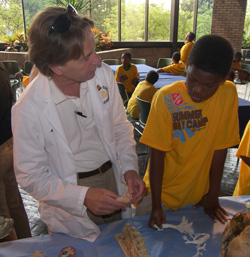I’ve admitted it here before: I’m a dedicated DIYer. Pinterest is a huge playground for me, and I scout craft shows for ideas I can try at home. Like most Martha Stewart wanna bes, I leave a lot of projects undone. It can turn out to be an expensive past time.
After years of this back-and-forth, I’ve realized one important few thing: sometimes DIY is more expensive — in money and time. That’s why I included the following in my book, Math for Grownups. Yes, the example is based on my own, personal experience, except that the ending turned out differently. (The obscure character? Luna of Harry Potter fame.) Had I really thought it through before heading to Joann’s Fabric, I would have saved myself some cash and a lot of time.
Rita loves Halloweʼen, and she loves making her kidsʼ costumes. This year, her 10-year-old daughter has requested a velvet-like cape and gown so that she can dress as some obscure character from her favorite novel about magical kids.
The pattern Rita is using calls for 7 yards of fabric, 2 fancy fasteners, and 3 yards of fringe. Looking at the Sunday circular for the local fabric store, she sees that crushed panne velvet is on sale for $2.99 per yard and the fringe is priced at $4 per yard. Rita guesses that the fasteners are about $5 each. To estimate her costs, she adds everything together:
(7 • $2.99) + (3 • $4) + (2 • $5)
(In case you lost track, that’s 7 yards of fabric at $2.99 per yard, 3 yards of fringe at $4 per yard, and 2 frog clasps at $5 each.)
$20.93 + $12 + $10 = $42.93
A terrifying price!
Rita is starting to think that a trip to a thrift shop might be a better investment of her time and money. Sometimes doing it yourself just isn’t worth it.
Do you have any scary costume stories? How have you learned to save money while DIY and celebrating Halloween?



